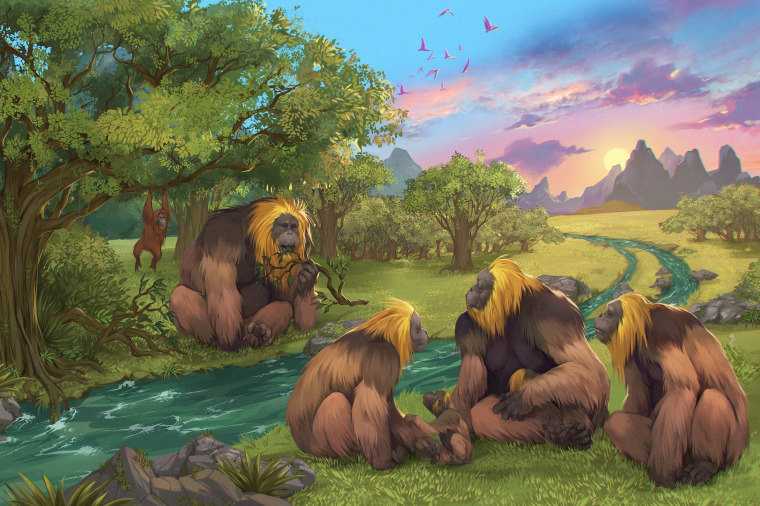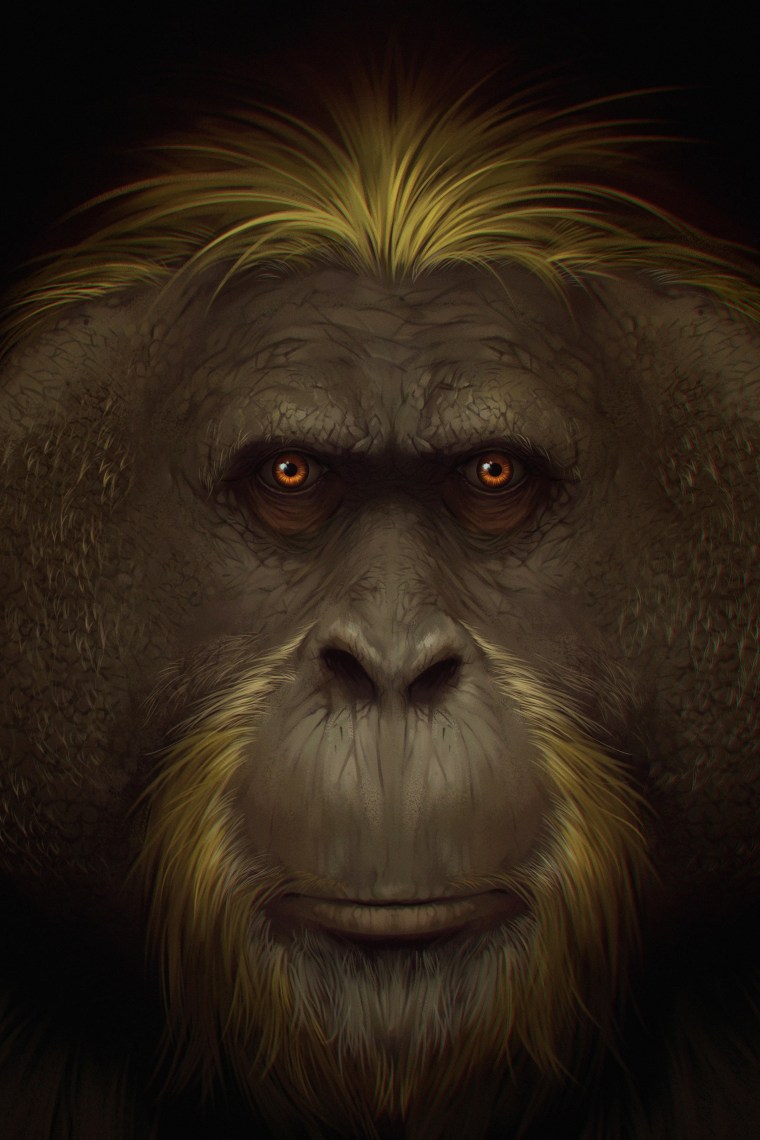HONG KONG — It did not fall off the Empire State Building.
Instead, a giant ape sometimes dubbed the “real King Kong” was driven to extinction by climate change that put its favorite fruits out of reach during the dry season, according to new research published Wednesday in the journal Nature.

Standing 10 feet tall and weighing up to 650 pounds, Gigantopithecus blacki roamed the forested plains of southern China's Guangxi region hundreds of thousands of years ago, chowing down on fruits and flowers.
But the apes' strict diet may have led to the species' demise, researchers found.
The herbivore ape made a “fatal mistake of being reluctant in changing its food preference to find new, more nutritious food,” Yingqi Zhang, the study’s lead researcher, told NBC News on Thursday.
“When environments change, the preferred food by this giant ape became less available. But this giant ape didn’t adapt his dietary preferences. It still relied on his less nutritious food,” he added.
The creatures also stuck to dense forests, whereas apes like orangutans adapted rapidly, eating small animals and moving to open forests, said Zhang, a Beijing-based paleontologist.

Until now, the reason for the species' demise had been a mystery since one tooth was found in a Hong Kong apothecary in 1935 by the German Dutch paleontologist Gustav Heinrich Ralph von Koenigswald. It was marketed as a “dragon tooth.”
The discovery prompted a wider search for more fossils, but after 85 years, only 2,000 isolated teeth and parts of the lower jaw have been found. No parts other than the skull have been recovered.
Without a “precise timeline” for a creature's extinction, “you’re looking for clues in the wrong places,” said one of the study's lead authors, Kira Westaway, a geochronologist at Macquarie University in Sydney.
But researchers were able to use one of the latest techniques, called “luminescence dating,” which enabled them to date the soil around the fossils in 22 caves in southern China.
That helped them conclude that the giant apes died out sometime between 295,000 years ago and 215,000 years ago.
“Now we had a target zone; we had a target time period. So then we kind of start looking at the environmental changes,” Westaway said.
The team also found clues in the fauna surrounding the caves, and a pollen analysis and the wear on the giant apes' teeth underscored that the changing climate meant seasonal and fruits became scarcer and they were forced to rely on less nutritional foods.
“Giganto couldn’t really extend its range for foraging to find more suitable food, because it’s so large, and orangutans are really small, mobile and quite agile,” Westaway said, adding that the new study offered a blueprint for further research into major extinction events.
“You need to get a very, very accurate timeline. You need to look at what the environment is doing and then look at how they were behaving,” she said.
Several dozen species of great apes inhabited Africa, Europe and Asia between around 2 million and 22 million years ago. Today, only gorillas, chimpanzees, bonobos and orangutans remain.
Westaway said the research could also open a possible window into the future for how humans can adapt to adverse climate events and ensure the survival of the species.
“It really puts a precedent on trying to understand how primates respond to environmental stresses and what makes certain primates vulnerable and what makes other ones resilient,” she said.
